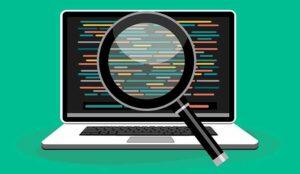CallMiner introduce us to text analytics and how it can be used in the contact centre.
Hidden in plain sight, valuable insights into consumer perspectives, product performance and other invaluable findings lie in wait for companies to discover.
The catch – this information is largely unstructured, at least by business intelligence standards, making it difficult to organize and interpret. This is precisely where sophisticated text analytics solutions come into play.
Text analytics helps to gather and transform unstructured textual information into meaningful, actionable information fit for strategic use.
Through the use of text analytics, businesses looking to map out new growth trajectories can determine what their customers are telling the rest of the world about their products and services, then adjust their approach appropriately. Speech analytics, in contrast, performs similar functions on spoken words.
To fully grasp the utility and function of text analysis in a business context, it is helpful to first acknowledge the various types of text analytics that exist. Read on to learn about these and more.
Types of Text Analytics
Not all text analytics are created equal. Much like the wider world of business analytics, text analytics can be split into distinct groups based on function and results.
The following three groups are commonly used to categorize text analytics approaches:
Descriptive Analytics
Text analytics processes that fit into this category revolve around reporting.
Data is gathered from unstructured text, given logical structure and searched-for trends.
Topics and general themes can be grouped together to create a clearer picture of overall user sentiment, purchasing habits and more over time.
Predictive Analytics
Predictive analytics places specific emphasis on forecasting future events. In predictive text analytics, unstructured text is gathered and interpreted with this final result in mind.
This type of analytics helps businesses produce accurate forecasts for inventory management, purchasing behaviour and even risk mitigation.
An example of predictive analytics’ utility in a contact centre context would be using open customer support tickets to determine the ideal number of agents to keep on call for a given specialized form of assistance.
Prescriptive Analytics
Text analytics can be prescriptive as well by helping to define a contingency plan for specific future outcomes. This type of analytics process leverages predictive analytics to better inform assessments.
Due to the inherent practicality of this form of analytics, text or otherwise, it is often preferred among business leaders looking to increase their brand’s market share.
Steps in the Text Analysis Process
Although the exact analytical processes employed by specific text analysis tools are likely to be unique in a variety of ways, there are certain overarching steps that are always present. These are as follows:
Identification
In this first step, locations to source valuable data from are carefully identified.
Extraction
Here, text is parsed and often filtered to form coherent phrases, then it is saved for further analysis.
Cleaning
Extracted text is conditionally transformed into machine-readable, mathematically interpreted formats at this stage.
Mining
Finally, special algorithms are used to identify insights across userbases, buyer personas and more, yielding meaningful reports that companies can use to direct their growth without resorting to guesswork.
Mining comes in a variety of forms, each characterized by a distinct function. These are as follows:
Sentiment Mining: This type of mining categorizes phrases as positive, neutral or negative. This categorization process, though simple, yields powerful insight into customer perceptions of your brand and current market offerings.
Intention Mining: When text is mined for potential intentions, specific desires among users and consumers are assigned to statements and tallied up to form minor trends. Such trends can be factored into product and service adjustments to better suit your clientele.
Trend Mining: Trend mining typically is performed on large textual data sets to identify major shifts in consumer behaviour relative to a business’s offerings or industry.
Concept Mining: This form of text mining pulls specific ideas from multiple documents, then classifies and ranks them by predetermined criteria.
Concept mining is often used to pull potential service improvement ideas and operational adjustment concepts directly from relevant consumers.
Text analytics represents a rapidly widening avenue for data-driven growth in an increasingly globalized economy.
Through the use of text analytics or multi-channel text and speech analytics, companies can heed the guidance given by their customer base to map out future goals and improvements to their current business models.
This blog post has been re-published by kind permission of CallMiner – View the Original Article
For more information about CallMiner - visit the CallMiner Website
Call Centre Helper is not responsible for the content of these guest blog posts. The opinions expressed in this article are those of the author, and do not necessarily reflect those of Call Centre Helper.
Author: CallMiner
Published On: 2nd Mar 2021 - Last modified: 3rd Mar 2021
Read more about - Guest Blogs, CallMiner






 CallMiner is the leading cloud-based customer interaction analytics solution for extracting business intelligence and improving agent performance across all contact channels.
CallMiner is the leading cloud-based customer interaction analytics solution for extracting business intelligence and improving agent performance across all contact channels. 












